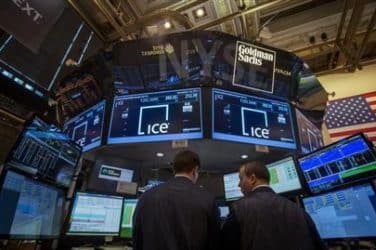
Market participants warned that global liquidity will continue to fragment if regulators do not harmonize rules on cross-border derivatives trading before new regulations come into force in the European Union.
Scott O’Malia, chief executive of Isda said at the derivatives trade association’s Trade Execution Legal Forum in London today that cross-border issues need to be resolved to maintain the global nature of the derivatives market. He continued that it would be hugely helpful for the market if MiFID II, which will come into force in the EU in 2018, and the requirements of the US Dodd-Frank act in the US are aligned for swap execution facilities in particular.
In clearing for example, the European Commission said this year that US central clearing counterparties registered with the Commodity Futures Trading Commission, the US regulator, were equivalent to CCPs regulated by the EU. Therefore trades cleared by a US CCP do not need more capital under Emir, the EU clearing regulations.
O’Malia said: “There has been progress on CCPs but it was hardly ideal as the process took three years. If that is repeated with trading venues it will be very damaging and there will a super size chasm in global liquidity.”
Edwin Schooling Latter, head of markets policy at the Financial Conduct Authority, the UK regulator, said at the forum that the final details of EU equivalence for US trading platforms are being considered.
“The prize for mutual equivalence is substantial,” added Schooling Latter. “There will be deeper liquidity, efficiency and distribution of risk.”
Schooling Latter explained that the key difference between the EU and US regulations for trading venues related to best execution. MiFID II requires public pre-trade transparency while US SEFs have a central limit order book and require request for quotes to be sent to three counterparties.
J. Christopher Giancarlo, commissioner at the CFTC made a speech at the forum about technological disruption, changing market liquidity and global fragmentation in the derivatives market.
On fragmentation, Giancarlo said the CFTC’s swaps trading regulatory framework has driven global market participants away from transacting with entities subject to US regulation.
“Overseas market participants avoid financial firms bearing the scarlet letters of “US person” in certain swaps products to steer clear of the CFTC’s problematic regulations,” he said. “As a result, non-US market participants’ efforts to escape the CFTC’s flawed swaps trading rules are fragmenting global swaps trading and driving global capital away from US markets.”
He continued that this accelerated since the launch of mandatory trading on swap execution facilities in the US in February 2014, liquidity has split between an on-SEF, US person market on one side and an off-SEF, non-US person market on the other.
“Divided markets are more brittle, with shallower liquidity, posing a risk of failure in times of economic stress or crisis,” he added. “Fragmentation has increased firms’ operational risks as they structure themselves to avoid U.S. rules and manage multiple liquidity pools in different jurisdictions (e.g.,through different affiliates).”
Giancarlo recommended that the CFTC revisit its “flawed” swaps trading rules to better align them to market dynamics to allow US swap intermediaries to fairly compete and reverse the fragmentation.
He continued that these flawed rules together with the evolution of some trading markets from dealer to agency models and the impact of US and European monetary policy has led to more episodic trading liquidity and sharper volatility.
“We can no longer continue to avoid the question of whether the amount of capital that bank regulators have caused traditional dealers to take out of trading markets is at all calibrated to the amount of capital needed to be kept in global markets to support the health and durability of the global financial system,” Giancarlo added. “If the next financial crisis is not to be a crisis of market liquidity, then the time has come for both market and bank prudential regulators to devote full attention and concern to the changed nature of trading liquidity.”
More on equivalence:





